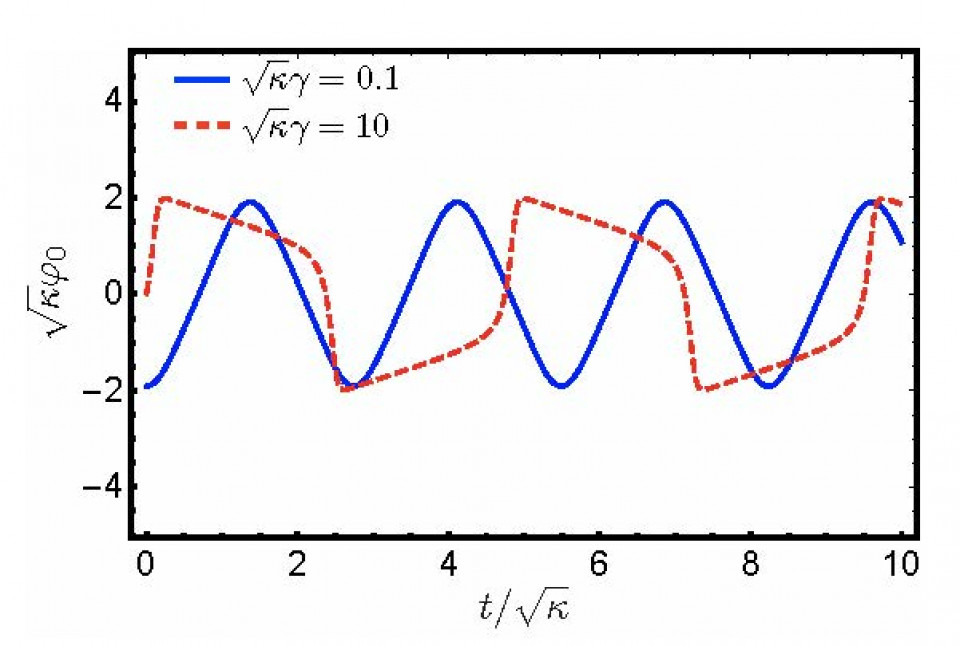Diffusive Nambu-Goldstone modes in quantum time-crystals
Symmetry and its breaking is one of the most important notions in modern physics. It is known that when a continuum symmetry is spontaneously broken, there appears a gapless excitation called the Nambu–Goldstone (NG) mode. Such a mode appears in several length scales. In the femtometer scale, pions that are responsible for nuclear force, are the NG modes associated with chiral symmetry breaking. In the meter scale, the sound mode in solid is the NG mode associated with spontaneous breaking of translational symmetry.
In this paper, we study the NG modes associated with spontaneous breaking of the continuous time-translation symmetry in an open quantum system.
For this purpose, we study a system with a van der Pol type nonlinear-friction. By considering small fluctuations around a time-periodic mean-field solution, we find that a gapless collective mode, which is a diffusive one, necessarily appears; this is nothing but the NG mode of a time crystal. We also show that noncommutative breaking of the time-translation and U(1) symmetries results in mixing of the NG modes, and the (typically) propagating NG mode appears.
- Reference
- Tomoya Hayata, Yoshimasa Hidaka
"Diffusive Nambu-Goldstone modes in quantum time-crystals"
arXiv: 1808.07636



